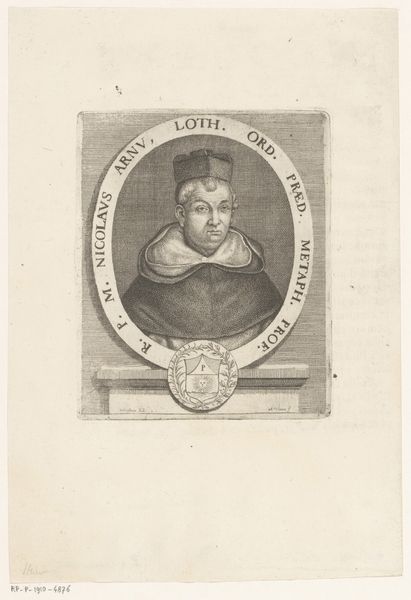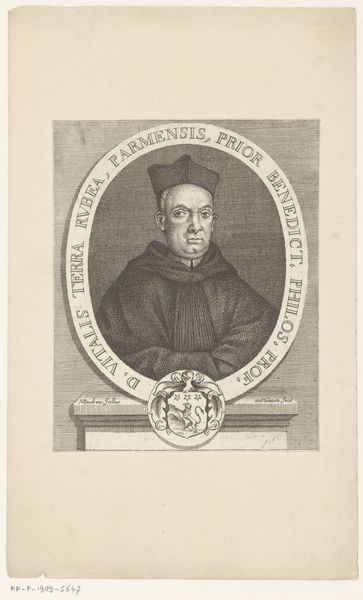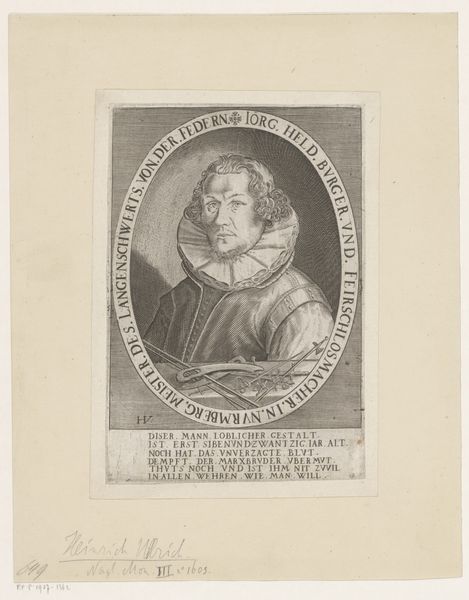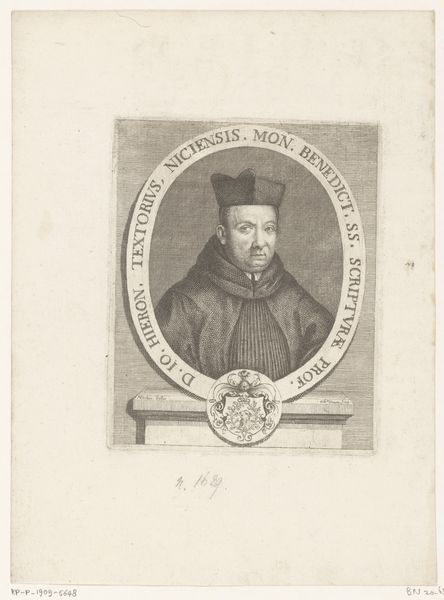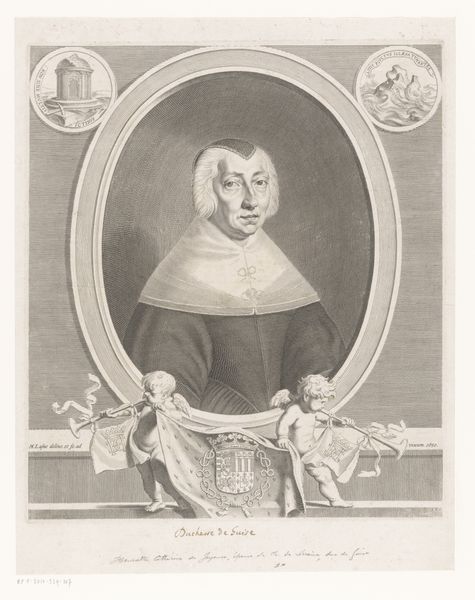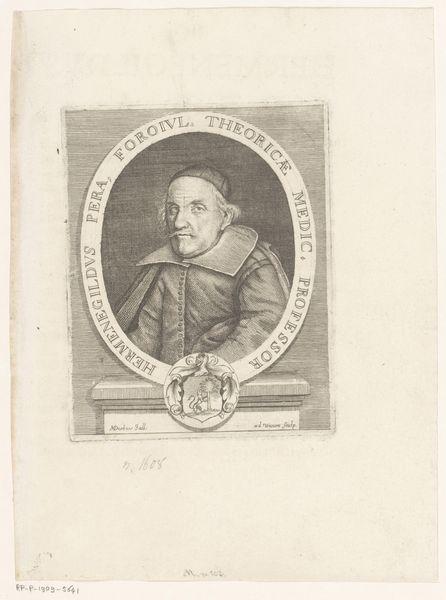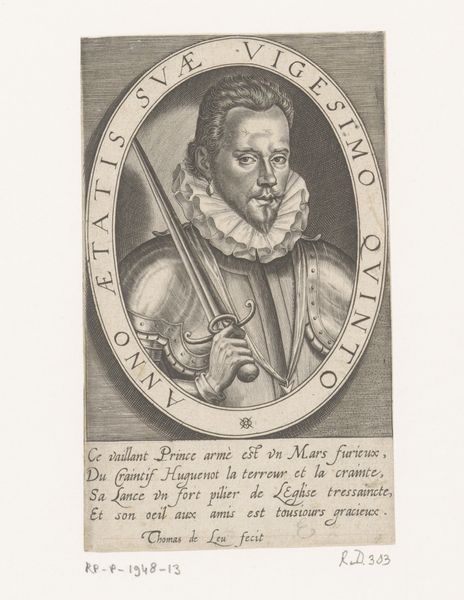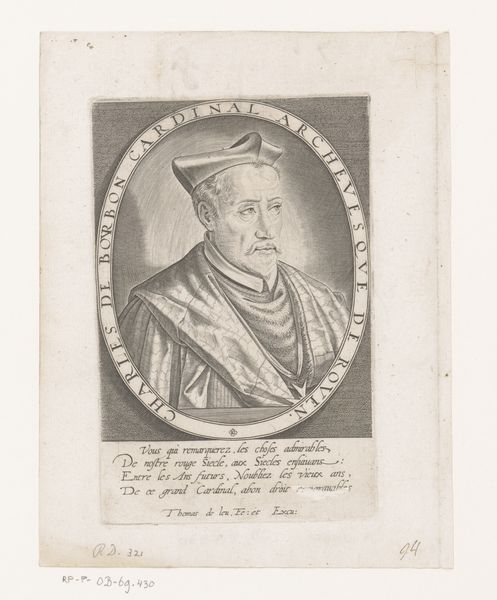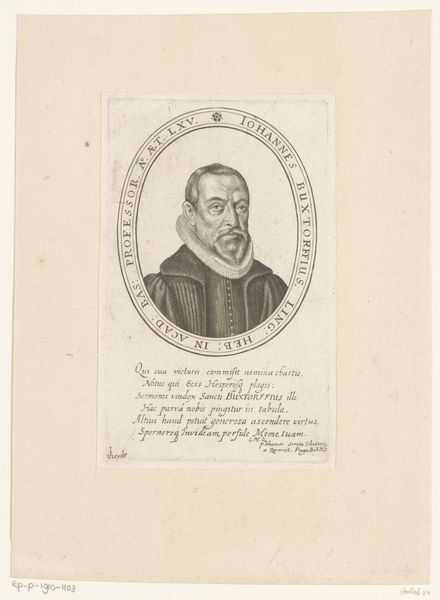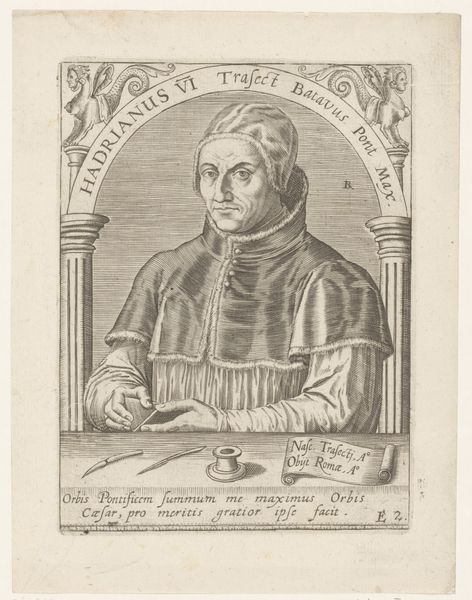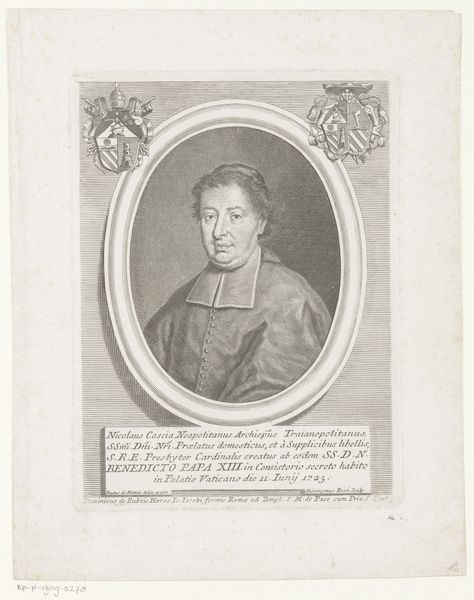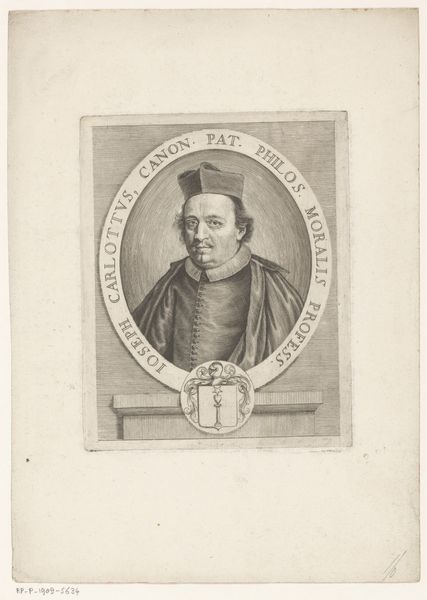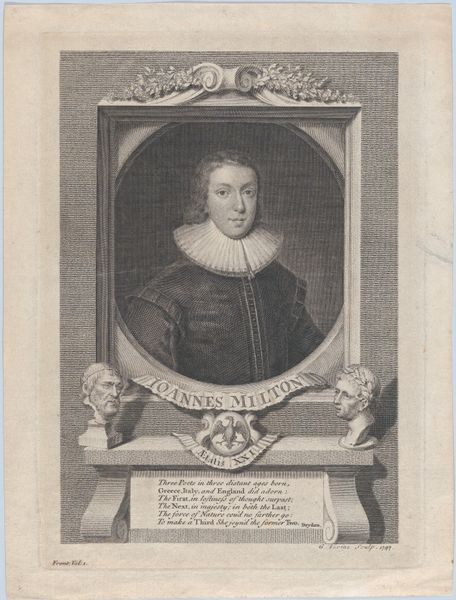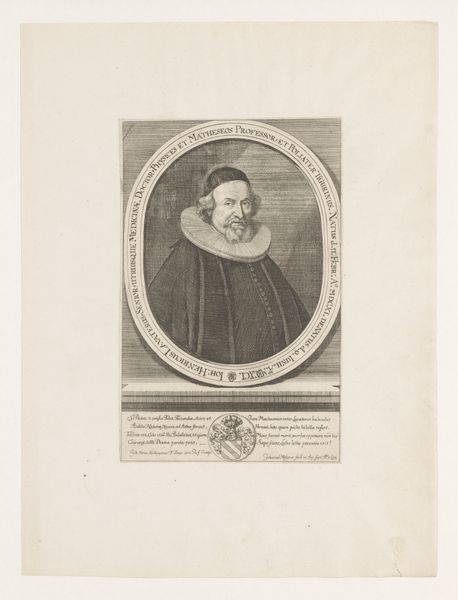
print, engraving
#
baroque
# print
#
engraving
Dimensions: height 133 mm, width 105 mm
Copyright: Rijks Museum: Open Domain
Curator: This is Martial Desbois's 1682 engraving, "Portret van Antonio Maria de Blanchis," rendered entirely as a print. What's your initial read? Editor: My first impression is the meticulousness of the line work. The stippling and hatching create depth, but there’s also something quite austere about it. It’s as if the print process itself demands a certain level of... gravity. Curator: Interesting you say that. Considering printmaking during the Baroque period, there's a democratization at play. Engravings like this allowed for the wider circulation of images, moving portraiture beyond the confines of oil paint and wealthy patrons. Think of the material impact— multiple copies disseminated to different locations, possibly even used as teaching aids given de Blanchis’s title and status. Editor: Yes, but look closely. Desbois's skill transforms a rather common medium into something visually refined. Note the strategic use of chiaroscuro around de Blanchis's face. This treatment softens the austerity of the engraved lines. And observe the formal framing devices like the circle and the plaque below—these elements give the portrait a classical structure. Curator: Framing devices indeed served several purposes beyond aesthetics. They reinforced the subject's authority but were also relatively economical for the engraver. Notice how little actual background work there is? Most of the image’s impact hinges on Desbois's mastery of cross-hatching, an inexpensive and relatively efficient process, yet effective. How does this economy affect your interpretation? Editor: It refocuses me back to the semiotics of the image: The oval border functions almost like a halo. It's symbolic of the respect or authority granted to him. It draws my eye towards the coat of arms, set almost like a seal guaranteeing his status, ensuring this image, circulated as it was, wouldn't lose the meaning behind his power. Curator: Quite a balancing act of economy and social statement, I think. An intriguing piece when considered against the wider context of early print production and consumption. Editor: Indeed, a complex intersection of technical skill and formal restraint meeting social messaging makes this a work ripe for discussion.
Comments
No comments
Be the first to comment and join the conversation on the ultimate creative platform.
